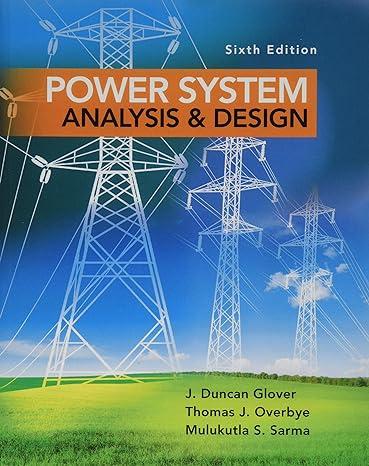Consider a three-phase generator rated (300 mathrm{MVA}, 23 mathrm{kV}), supplying a system load of (240 mathrm{MVA}) and
Question:
Consider a three-phase generator rated \(300 \mathrm{MVA}, 23 \mathrm{kV}\), supplying a system load of \(240 \mathrm{MVA}\) and 0.9 power factor lagging at \(230 \mathrm{kV}\) through a 330 MVA, \(23 \Delta / 230 \mathrm{Y}-\mathrm{kV}\) step-up transformer with a leakage reactance of 0.11 per unit.
(a) Neglecting the exciting current and choosing base values at the load of \(100 \mathrm{MVA}\) and \(230 \mathrm{kV}\), find the phasor currents \(I_{\mathrm{A}}, I_{\mathrm{B}}\), and \(I_{\mathrm{C}}\) supplied to the load in per unit.
(b) By choosing the load terminal voltage \(V_{\mathrm{A}}\) as reference, specify the proper base for the generator circuit and determine the generator voltage \(V\) as well as the phasor currents \(I_{\mathrm{A}}, I_{\mathrm{B}}\), and \(I_{\mathrm{C}}\), from the generator. Take into account the phase shift of the transformer.
(c) Find the generator terminal voltage in \(\mathrm{kV}\) and the real power supplied by the generator in MW.
(d) By omitting the transformer phase shift altogether, check to see whether you get the same magnitude of generator terminal voltage and real power delivered by the generator.
Step by Step Answer:

Power System Analysis And Design
ISBN: 9781305632134
6th Edition
Authors: J. Duncan Glover, Thomas Overbye, Mulukutla S. Sarma





